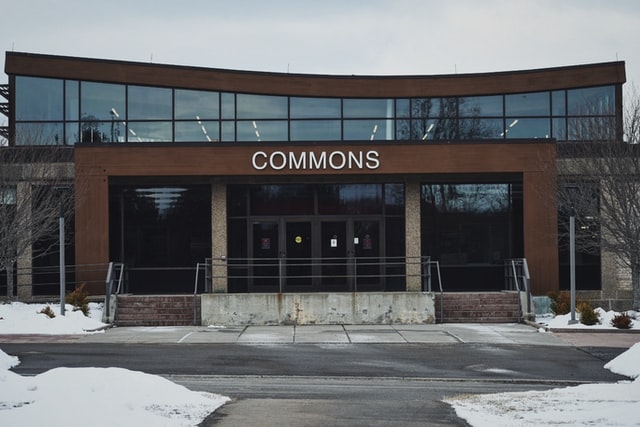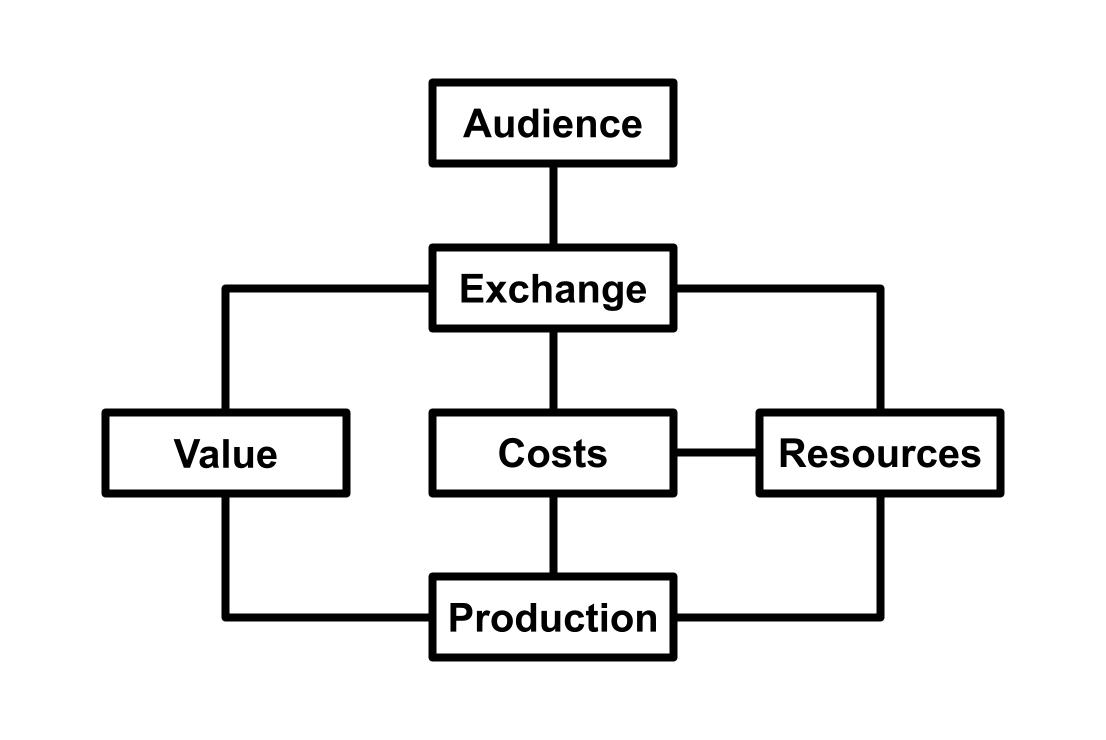Workforce Education Value Model

Recent projects include several Community College Workforce Education programs conducting "Comprehensive Learning Needs Assessments" (CLNA) as part of the Perkins V planning requirement. Through these projects we've developed a Value Model describing commonalities among many Perkins-funded Workforce Education programs. This model defines the basic elements of a Workforce Education program's ability to persist and succeed. Depending on how well the model is shared and understood, it can be applied to identify and analyze the interconnections and nuanced dependencies that make a Workforce Education program thrive.
The model below describes the general value dynamic of Workforce Education programs observed in 2020/21. It was used as a foundation for conducting a series of CLNA projects. While acknowledging the broad diversity of context and circumstance that makes each Community College Workforce Education program unique, many Perkins-funded Workforce Education programs may find this model useful for framing change.

VALUE is the product, service, or function a Workforce Education program offers to several audiences. Common elements of the value a Workforce Education program offers include:
- Equitable access to college credentials required to gain meaningful employment
- Opportunities for community members to up-skill or re-skill to obtain better jobs
- Postsecondary capacity to strengthen the effectiveness of the regional workforce system
- Diverse pool of qualified applicants for high demand professional and technical job openings
- Inclusive college education in support of regional social and economic objectives
AUDIENCES are the people who value what a Workforce Education program offers and enable an exchange of resources for the program's offerings, for example:
- Community members seeking post-secondary education credentials
- Employers requiring workers with professional and technical skills
- Federal, state and local public agencies who fund Workforce Education
- Private Workforce Education sponsors (e.g. non-profit foundations or alumni donors)
- Workforce partners seeking beneficial mission synergies (e.g., K-12, economic development agencies)
EXCHANGE is the process of delivering Workforce Education value to an audience in exchange for resources. These exchanges include:
- Academic and practical learning experiences
- Engagement with employers through industry advisory roles
- Tuition paid by enrolling students
- Government financial aid and scholarships supporting Workforce Education
- Federal or state Workforce Education grants
- State formula FTE funds awarded to community colleges
- Regional workforce partner volunteers (fe.g., advisory committees)
- Workforce partner resource contributions (e.g., student workforce experiences)
- Non-profit foundation grants and individual college donations
PRODUCTION are the key steps a Workforce Education program takes to design, develop, and deliver its value to its audiences. These steps include:
- Intentional outreach and recruitment of diverse students and educators for workforce programs
- Employer partnerships integrating workplace experiences into program curriculum
- College Workforce Education faculty developing dual enrollment opportunities
- Aggressive efforts to ensure equitable access to Workforce Education student supportive services
- Employer consultation and analysis to anticipate regional technical skill demands
- Curriculum and pedagogical reforms aligning instruction with regional business workforce needs
- Availability of quality data to support Workforce Education program planning decisions
COSTS are the consumption of time, money, and materials involved in producing and exchanging a Workforce Education program's value. These costs include:
- Payroll for faculty, staff, and administration
- Instructional facilities, equipment, and technology
- Outreach and recruitment efforts
- Support for workplace experiences, apprenticeships, and internships
- Funding for curriculum and pedagogical reforms
- Professional development for faculty, staff, and administrators
- Data development, distribution, and application
RESOURCES are the people, money, environment, infrastructure, and things required by a Workforce Education program to produce and exchange its value, including
- Faculty and instructors
- College services such as student services, business office, institutional research, grant management
- External workforce partners and industry relationships
- Prior delivery experience of Workforce Education programs
- State and Federal workforce Workforce Education program funding streams
The elements described in the model above are some of the key aspects Workforce Education programs strive to develop, maintain, and evolve. We used this model in several CLNA projects as a framework for engaging stakeholders to build actionable ideas of desired and attainable future change. Over time the model will change, and that's an important utility of the Value Model because it helps decision makers and planners continually evaluate and articulate how things are so they can envision and enact future improvements.